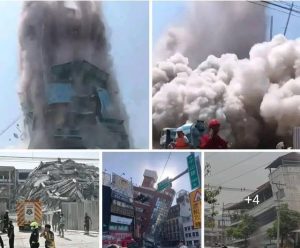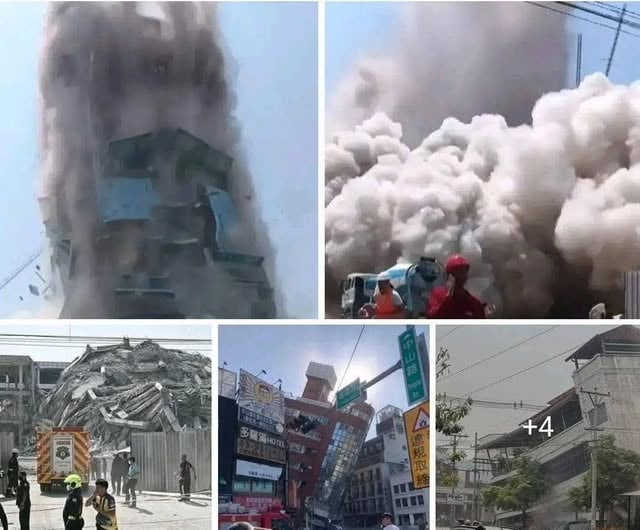As a major earthquake happened offshore, tsunami sirens broke the peace in coastal cities like Kodiak, Alaska. Reuters captured the sirens on video, revealing their significance beyond mere noise. They set off a rapid and organized response from emergency services and people, many of whom had been threatened by tsunamis before. This time, the U.S. National Tsunami Warning Center (NTWC) sent out a comprehensive warning for a large area of Alaska’s southern coast, from Hinchinbrook Entrance to Unimak Pass. The warning said that anyone living in low-lying coastal areas should leave right away because of the risk of tsunami waves that could be deadly, caused by geological action underneath the sea.
The warning didn’t just apply to Alaska. At first, the threat seemed big enough that the NTWC and the Pacific Tsunami Warning Center sent out early alerts to faraway places like Hawaii and Guam. These areas, situated across the Pacific Ocean, remain vigilant following major earthquakes beneath them. Fortunately, more data analysis and real-time ocean monitoring later showed that Hawaii and Guam were not in immediate danger, and the alerts were canceled. The early warning, on the other hand, showed how well the integrated worldwide tsunami monitoring systems work to save lives across thousands of miles of water.

In Alaska, governmental officials moved quickly. Governor Mike Dunleavy said that Alaska’s Emergency Operations Center is now fully operational, which is a vital step in preparing for any possible calamity. The state collaborated with the Department of Homeland Security and Emergency Management, local governments, the Coast Guard, and federal organizations such as NOAA to monitor wave patterns, provide precise updates, and assist with evacuations. People in Alaska, many of whom live in tsunami-prone areas, followed their practiced steps. Automated alerts on phones and radio broadcasts triggered sirens, prompting people to receive instructions on how to evacuate. People went to designated shelters, such as schools, recreation facilities, and even parking lots at higher elevations, to get ready for what might happen.
Emergency workers went door-to-door in coastal towns like Seward, Cordova, and King Cove to make sure that vulnerable groups like the elderly, disabled people, and families without cars were aware of the situation and received help. Law enforcement partnered with volunteer responders and local tribal groups to keep things in order, stop panic, and make sure everyone had access to the information and help they needed. Businesses in the area stopped early, while fishing boats went back to port or retreated to deeper waters, where the effects of a tsunami are usually less severe.
At the same time, scientists and technicians at the Pacific Tsunami Warning Center were working nonstop to make sense of data from deep-sea pressure sensors, seismographs, and tide gauges that were spread out over the Pacific Basin. The goal was to find out exactly where the earthquake happened, how deep it was, and how strong it was, as well as whether it moved enough water to cause waves that could destroy things. They used historical data, computer models, and simulations to guess how long it would take for waves to reach populated regions. This information was used to send updates to emergency centers and the news media.
Even though the earthquake was severe enough to cause a lot of worry, the last wave activity was very low in most regions. The water levels in Alaska’s coastal towns barely changed at all, which means there was some movement under the sea, but it wasn’t enough to cause harm. Within hours, the orders to leave were withdrawn, and the people who lived there went back home, frightened but safe. There were no injuries or deaths, and no major damage to infrastructure was reported.
Some people might think the occurrence was a false alarm, but experts and officials strongly disagree. In places like Alaska that are prone to tsunamis, any big earthquake that happens under the sea near the shore should be considered a major threat. Tsunamis can happen very quickly after an earthquake, giving people very little time to get ready. The 1964 Good Friday earthquake and tsunami in Alaska, which killed more than 130 people and destroyed whole villages, is a scary reminder of what can happen when people don’t listen to warnings or systems fail.
The way people reacted to this recent warning showed how important it is to have early warning systems, be ready for anything, and believe signals that are founded on science. It also showed how important it is for local, state, and national agencies to work together to save lives. The sirens that went off in Kodiak may have been a precaution, but they did what they were supposed to do: alert everyone in the area that nature’s power is unpredictable and that they need to be on the lookout.
People in the area were pleased that the warning didn’t lead to a disaster and complimented how quickly emergency services responded. Many others took the time to go over their family’s evacuation preparations, stock up on emergency supplies, and thank the volunteers and professionals who worked behind the scenes to keep them safe. Overall, even though the waves never came crashing down, the experience made a strong impression and strengthened everyone’s commitment to be ready for whatever the future may bring.
